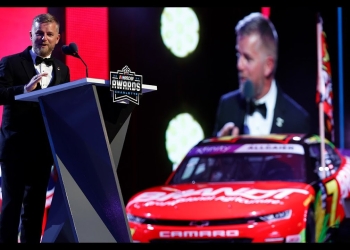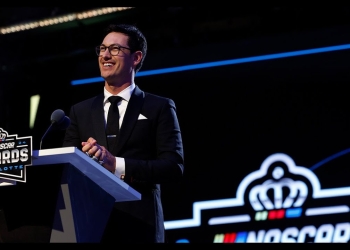Mastering Homestead's Infamous Wall: A Technical Breakdown
At Homestead-Miami Speedway, success often comes down to a driver's ability to navigate mere inches from the wall. This technical analysis explores the unique challenges and techniques required to master one of NASCAR's most demanding racing surfaces.
The Wall-Riding Phenomenon
The distinctive characteristic of Homestead's racing surface forces drivers to adopt an unconventional approach known as "wall-riding." This technique becomes necessary due to two key factors:
- Track evolution throughout the race
- Tire wear patterns
- Aerodynamic advantages
- Limited rubber buildup near the wall
"You're actually feeling almost like an air cushion, like a pillow against that wall that the car is leaning up against," explains NASCAR analyst Parker Kligerman.
Kyle Larson's Mastery
Kyle Larson has established himself as the premier wall-rider in NASCAR. His technique demonstrates extraordinary precision, consistently maintaining a distance of approximately one inch from the wall. This remarkable skill involves:
Sensory Navigation
- Auditory Feedback: Drivers listen to exhaust reverberation off the wall
- Physical Sensation: Feeling the air cushion effect between car and wall
- Visual Cues: Maintaining awareness of fender position relative to the wall
Technical Challenges
The complexity of wall-riding at Homestead requires constant adjustments:
| Challenge | Impact | Solution |
|---|---|---|
| Tire Wear | Decreased grip | Reduce entry speed |
| Speed Management | Risk of wall contact | Precise throttle control |
| Margin for Error | One inch tolerance | Constant position awareness |
Strategic Considerations
Successful wall-riding requires a delicate balance between aggression and conservation. Drivers must:
- Adjust entry speeds as tires wear
- Maintain consistent line selection
- Monitor vehicle feedback
- Limit wall contact attempts
"You can only get away with it a couple times," cautions Kligerman regarding wall contact.
The Risk-Reward Balance
Racing at Homestead presents a continuous calculation of risk versus reward. The high-line strategy offers superior speed but comes with significant risks:
-
Advantages
- Additional grip from clean racing surface
- Improved aerodynamic performance
- Potential for faster lap times
-
Risks
- Minimal margin for error
- Potential for race-ending damage
- Increased tire wear
Click here to preview your posts with PRO themes ››
This unique combination of technical challenge and strategic decision-making makes Homestead's wall-riding technique one of NASCAR's most compelling storylines, requiring both precision and courage from competitors seeking victory.









